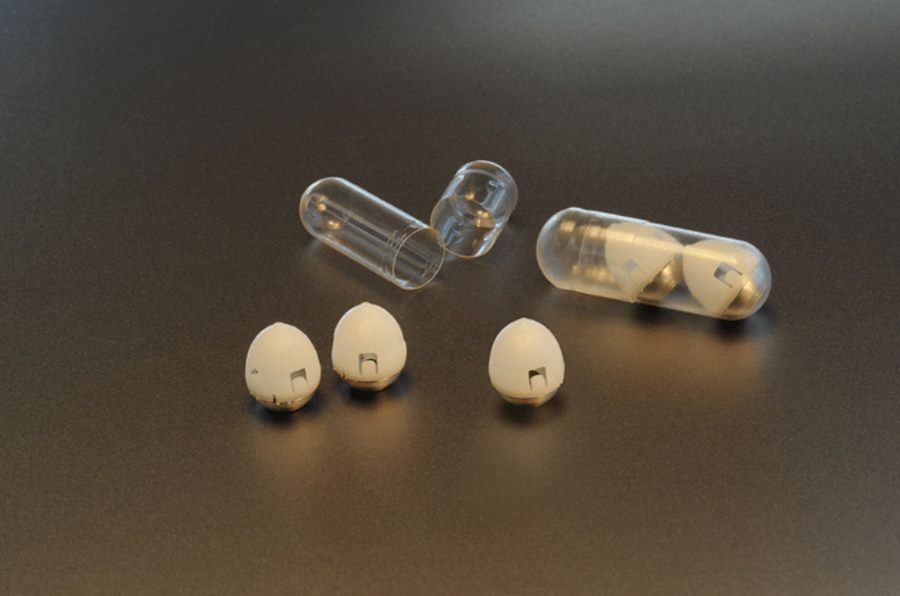New pill for diabetics could replace injections

A new pill for diabetics could replace injections
A research team led by MIT scientists has developed a capsule that, when swallowed, injects insulin directly into the stomach wall. The pill has the potential to free people with diabetes from the need for injections.
Life without daily injectionsow could be the salvation of a millionow osob patients with type 1 diabetes. Uncomfortable injections once or twice a day are currently the only option for them to deliver insulin, whichoThe drug their bodies are unable to produce on their own. But scientists at the Massachusetts Institute of Technology (MIT) have developed a special capsule thatora could dramatically change the wayothe way diabetics keep their blood sugar levels in check.
The berry-sized pill is equipped with a tiny needle made from compressed insulin. Once swallowed and reaching the stomach, insulin is injected directly into its walls. In animal studies, researchers have shown that it is possible toob to provide the body with sufficient insulin. They showed roalso that the device can be adapted to deliver other drugsoin protein.
The findings were published in the journal „Science”.
Oral delivery of the drugow is the simplest and least invasive way. However, many drugow, including insulin, does not survive its way through the duct of theod digestive. It also cannot cope with contact with stomach acids. A way out of this situation was proposed by the teamoł scientistow led by Alex Abramson of MIT. Researchers have developed something like a „delivery vehicle” in the shape of a capsule, whichory carries the drug with it and is able to independently change its orientation from any initial position so that it attaches to the stomach wall. After such a maneuver, a spring mounted in the sheath activates to deliver the drug. During the testow approach has successfully provided active insulin delivery in pigs.
– We very much hope that this new type of capsule may someday help theoc patients with diabetes and perhaps anyone who requires administration of drugow exclusively by injection or infusion,” said Robert Langer of MIT, coostudy rover.
– Our motivation is to make it easier for patients to take their medicationow, especiallyolnie the drugoin those requiring an injection. The classic example here is insulin, but there are many other drugsow that require injection – admitted Giovanni Traverso of Harvard Medical School, roalso involved in the research. – Injections can be painful, cause trauma and act as a barrier to the osob those taking medication – added.
Traverso and Langer developed a tablet coated with many tiny needles a few years back. They wanted to in this wayob deliver drugs to the mucosa of the stomach or small intestine. In the case of the new capsule, the researchers changed the design to have only one needle, ktora is made in almost 100 percent of. Of compressed, lyophilized insulin. The remaining part of the needle, ktory does not enter the stomach wall, is made of a different biodegradable material.
The needle inside the capsule is attached to a compressed spring, whichora is held in place by a disk made of sugar. Once the capsule is swallowed and reaches the stomach, the sugar disk is dissolved, releasing the spring and driving the needle into the stomach wall. The walls of the stomach do not have receptorsoin bolu, so patients should not experience any unpleasant sensations.
In the new capsule, the key is the orientation system, ktory has been imitated in theoleopard lion. Regardless of which position the capsule lands in the stomach, the system allows the needle to be oriented in this wayob to penetrate the stomach wall.
The aforementioned ¿ołw, whichory inspired the researchers, resides in Africa. It gets its name from the distinctive patterns on the shell. But the shell (carapace) has another interesting feature. It is tall and has fairly steep walls, which allows for a ¿oThe lion’s rimoc on his feet when he happens to roll onto his back. Researchers used computer modeling to make a shell-based ¿olion to develop the right shape for the capsule, whichory would allow it to change orientation even in the dynamic environment of the stomach.
When the needle is inserted into the stomach wall, the insulin dissolves at a rate ktoa can be controlled at the capsule preparation stage. During the testow took about an hour before all the insulin was completely released into the bloodstream. The researchers provided the pigs with 5 milligrams using just such capsulesoin insulin, which is a poroequivalent to the amount a patient with type 1 diabetes would have to inject himself or herself.
The capsule is constructed of a biodegradable polymer and the componentoin stainless steel. Once the contents are released, they can pass harmlessly through the digestive system. During the testow scientists found no adverse effects of theoin this regard.
Teamo³ is currently conducting further tests on pigs and dogs and hopes to launch the first prob on humans within three years.




